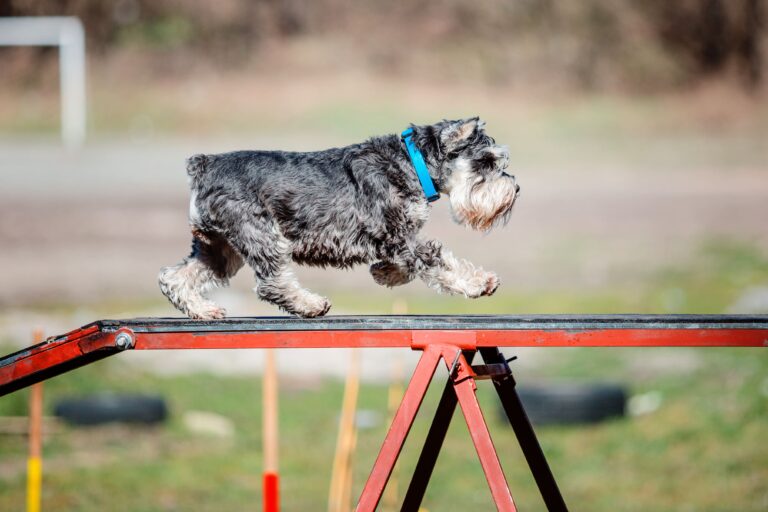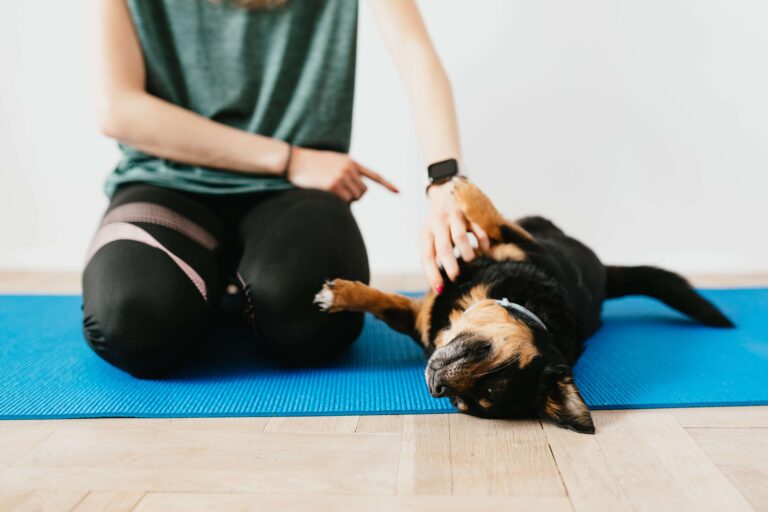Dog Exercise Wheel: A Fun and Healthy Way to Keep Your Dog Active
When it comes to keeping our furry friends healthy and happy, regular exercise is essential. Dogs, like humans, need physical activity to maintain their overall well-being. While daily walks and playtime in the park are great, there are other options available to ensure your dog gets the exercise they need. One such option is a dog exercise wheel, a fun and engaging tool designed specifically for our canine companions. In this article, we will explore the benefits of a dog exercise wheel and how it can improve your dog’s fitness.
- Understanding the Importance of Exercise for Dogs
- Introducing the Dog Exercise Wheel
- Benefits of a Dog Exercise Wheel
- How to Introduce Your Dog to the Exercise Wheel
- Tips for a Successful Dog Exercise Wheel Routine
- Common Misconceptions about Dog Exercise Wheels
- Alternative Exercise Options for Dogs
- Choosing the Right Dog Exercise Wheel for Your Pet
- Maintaining Your Dog's Safety during Wheel Exercise
- Conclusion
- Frequently Asked Questions (FAQs)
Understanding the Importance of Exercise for Dogs
Dogs are active animals by nature, and regular exercise is vital for their physical and mental well-being. Exercise helps to prevent obesity, improve cardiovascular health, strengthen muscles, and reduce behavioral issues caused by boredom or excess energy. Engaging in physical activities with your dog also fosters a stronger bond between you and your furry friend. While daily walks and interactive play are excellent forms of exercise, incorporating variety into your dog’s routine can provide additional benefits.
Introducing the Dog Exercise Wheel
A dog exercise wheel is a specially designed apparatus that allows your dog to engage in running or walking activities in a controlled environment. It resembles a large hamster wheel, but it is designed specifically for dogs of all sizes. The wheel is made with durable materials and features a comfortable surface for your dog’s paws, ensuring a safe and enjoyable exercise experience.
Benefits of a Dog Exercise Wheel
- Physical Fitness: A dog exercise wheel provides a complete cardiovascular workout for your furry friend. Running or walking on the wheel helps to improve endurance, strengthen muscles, and maintain a healthy weight.
- Mental Stimulation: Engaging in regular exercise on the wheel keeps your dog mentally stimulated and prevents boredom. It helps to alleviate anxiety and reduces the likelihood of destructive behaviors caused by excess energy.
- Convenience: Having a dog exercise wheel at home offers convenience, especially during extreme weather conditions or when you have limited time for outdoor activities. It ensures that your dog can get their exercise regardless of the circumstances.
- Suitable for All Breeds: Dog exercise wheels are suitable for dogs of all breeds and sizes. Whether you have a small Chihuahua or a large German Shepherd, there is a wheel size that can accommodate your pet’s needs.
- Joint Health: The low-impact nature of exercising on a wheel is gentle on your dog’s joints. It provides a safe alternative for dogs with joint issues or those recovering from injuries.
How to Introduce Your Dog to the Exercise Wheel

Introducing your dog to the exercise wheel requires patience and positive reinforcement. Here are some steps to help you get started:
Familiarization: Allow your dog to explore the wheel at their own pace. Encourage them to sniff and investigate it without any pressure.
Positive Association: Reward your dog with treats and praise when they approach or interact with the wheel. This creates a positive association with the equipment.
Gradual Training: Start by having your dog stand on the wheel and reward them for doing so. Gradually increase the duration and intensity of the exercise as your dog becomes more comfortable.
Consistency: Establish a regular exercise routine and be consistent with training sessions. This will help your dog become familiar and comfortable with the wheel over time.
Tips for a Successful Dog Exercise Wheel Routine
To make the most out of your dog exercise wheel experience, consider the following tips:
Safety First
Always prioritize your dog’s safety. Ensure that the wheel is set up properly and check for any loose or damaged parts before each use.
Warm-Up and Cool-Down
Before and after each exercise session, engage your dog in a brief warm-up and cool-down routine to prevent muscle strain.
Gradual Progression
Start with shorter exercise sessions and gradually increase the duration and intensity over time. Avoid pushing your dog too hard, especially in the beginning.
Monitor Hydration
Keep fresh water available for your dog during and after exercise. Hydration is essential to prevent overheating and dehydration.
Supervision
Always supervise your dog while using the exercise wheel, especially during the initial stages. This ensures their safety and allows you to monitor their progress.
Common Misconceptions about Dog Exercise Wheels
There are a few common misconceptions regarding dog exercise wheels that we should address:
- Replacement for Outdoor Activities: While a dog exercise wheel is a great addition to your dog’s exercise routine, it should not replace regular walks and outdoor activities. Dogs still need exposure to different environments and social interactions.
- Instant Adaptation: Some dogs may take longer to adapt to the exercise wheel. Be patient and give them time to become comfortable with the equipment. Remember to use positive reinforcement throughout the training process.
Alternative Exercise Options for Dogs

Aside from a dog exercise wheel, there are other exercise options to consider:
- Swimming: If your dog enjoys water, swimming is an excellent low-impact exercise that works the entire body.
- Agility Training: Engage your dog in agility training, where they navigate through various obstacles. This helps to improve coordination, mental sharpness, and overall fitness.
- Interactive Toys: Invest in interactive toys that encourage physical activity, such as treat-dispensing puzzles or rope toys for tug-of-war games.
Choosing the Right Dog Exercise Wheel for Your Pet
When selecting a dog exercise wheel, consider the following factors:
Size: Choose a wheel size that is suitable for your dog’s breed and size. They should be able to move comfortably without any restrictions.
Safety Features: Look for wheels with safety features like non-slip surfaces, sturdy construction, and smooth operation.
Durability: Opt for a wheel made from high-quality materials that can withstand regular use and support your dog’s weight.
Customer Reviews: Read customer reviews and feedback to gauge the wheel’s effectiveness and durability before making a purchase.
Best dog wheel exercise
Treadwheels from GoPetUSA
Maintaining Your Dog’s Safety during Wheel Exercise
To ensure your dog’s safety during exercise wheel sessions, keep the following precautions in mind:
- Supervision: Never leave your dog unattended while using the exercise wheel.
- Paw Care: Regularly check your dog’s paws for any signs of irritation or injuries caused by the wheel’s surface. Keep their nails trimmed to avoid discomfort.
- Rest Days: Allow your dog to have rest days between exercise sessions to prevent overexertion and muscle fatigue.
- Regular Maintenance: Clean the exercise wheel regularly and check for any wear and tear. Lubricate moving parts as necessary.
Conclusion
Incorporating a dog exercise wheel into your pet’s routine is an excellent way to provide them with regular exercise and mental stimulation. It offers numerous benefits for their physical health, mental well-being, and overall happiness. Remember to introduce the exercise wheel gradually, prioritize safety, and monitor your dog’s progress. With patience, consistency, and a positive training approach, your dog will soon embrace this fun and healthy activity.
Frequently Asked Questions (FAQs)
Subscribe to our weekly newsletter below and never miss the latest article.








